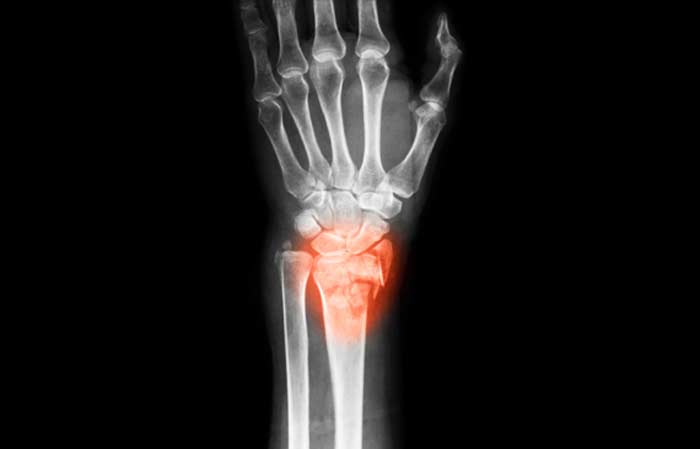
Wrist arthroscopy is a type of surgery that’s done to diagnose or treat problems affecting the wrist joint.
It’s an approach to accessing the wrist that’s less invasive than traditional methods. Results from the procedure can provide the type of detailed view needed to fine-tune treatment recommendations and restore normal wrist functions. A wrist arthroscopy can also be a less-invasive way to treat many different sources of wrist pain, including wrist fractures and symptoms caused by ligament damage.
Why Is a Wrist Arthroscopy Performed?
A wrist arthroscopy is usually recommended when wrist pain is being experienced and it’s not clear what may be causing it. This procedure may also be done to confirm a suspected problem with bones, joints, or soft tissues in the wrist area. Under certain circumstances, arthroscopic wrist procedures may be performed to:
- Relieve pain related to a small, fluid-filled sac in the wrist joint (ganglion removal)
- Determine the extent of damage from ligament tears
- Perform a carpal tunnel release
- View the extent of damage from a wrist fracture


How Is a Diagnostic Wrist Arthroscopy Done?
If the use of pain-relieving or anti-inflammatory medications, wrist exercises, avoidance of repetitious wrist movements, and other non-surgical attempts at treating wrist pain aren’t effective after several months, a wrist arthroscopy may be done to make an accurate diagnosis. Prior to performing the arthroscopy, a physical examination of the wrist is done. Results from X-rays, MRIs, and other image tests of the affected wrist are also usually reviewed.
During the procedure, the hand and arm are numbed with regional anesthesia. Some patients feel better if they’re also given a sedative. Small incisions called portals are made in the back of the wrist. A special instrument (arthroscope) with a camera attached to it is inserted to provide a detailed view of the wrist.
How Is It Done for Surgical Purposes?
The procedure is similar when used for surgical or treatment purposes. The difference is that other specialized instruments are used to perform various surgical procedures in a way that’s minimally invasive. With arthroscopic exploratory surgery that’s done because of chronic wrist pain, corrective surgery may be done after the source of ongoing wrist pain is determined. Arthroscopic wrist surgery may also involve the removal of bone fragments, realignment of fractured bones, cyst removal, or ligament repair. With a carpal tunnel release, a ligament is cut to enlarge a narrow passageway in the wrist (carpal tunnel).
What Happens Before and After the Procedure?
Prior to surgery, patients are typically asked to temporarily stop taking blood thinners to reduce the risk of bleeding. Some other medications may need be stopped prior to surgery as well. Patients are also advised not to smoke or drink alcohol to further minimize risks. Following a wrist arthroscopy, elevating the wrist above the heart may ease swelling. A wrist splint is sometimes worn for a week or two to allow the wrist to properly heal.
Since arthroscopic surgery involves smaller incisions than what’s normally needed with traditional open procedures, patients often report less pain following wrist-related surgery. There are also fewer complication and infection risks. Another perk for patients needing a wrist arthroscopy for diagnostic or treatment purposes is the possibility of enjoying a shorter recovery time. Follow-up care may involve hand and wrist exercises and other types of physical therapy.
